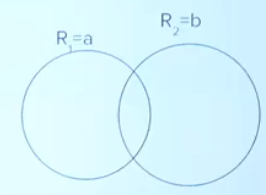True or False: The accumulation of charges is directly proportional to the radius of curvature of a curved surface.
To determine whether the statement "The accumulation of charges is directly proportional to the radius of curvature of a curved surface" is true or false, we can analyze the relationship between charge accumulation and the radius of curvature.
Step 1: Understand the concept of charge accumulation
Charge accumulation refers to how much electric charge can gather on a surface. This is influenced by the geometry of the surface, particularly its curvature.
Hint: Consider how the shape of a surface might affect where charges can accumulate.
Step 2: Analyze the effect of radius of curvature
The radius of curvature is a measure of how "curved" a surface is. A smaller radius of curvature means a sharper curve, while a larger radius indicates a gentler curve.
Hint: Think about how sharp edges or points might affect the distribution of charges compared to flatter surfaces.
Step 3: Compare charge accumulation on different surfaces
On a sharp surface (small radius of curvature), charges tend to accumulate more because the electric field is stronger at points or edges. Conversely, on a flatter surface (larger radius of curvature), the electric field is weaker, leading to less charge accumulation.
Hint: Reflect on why charges might prefer to gather in certain areas over others based on the geometry of the surface.
Step 4: Conclusion
Since the accumulation of charges is greater on surfaces with smaller radii of curvature (sharper surfaces) and less on surfaces with larger radii of curvature (flatter surfaces), we can conclude that the statement is false.
Final Answer: The statement is False.
Charge accumulation refers to how much electric charge can gather on a surface. This is influenced by the geometry of the surface, particularly its curvature.
The radius of curvature is a measure of how "curved" a surface is. A smaller radius of curvature means a sharper curve, while a larger radius indicates a gentler curve.
On a sharp surface (small radius of curvature), charges tend to accumulate more because the electric field is stronger at points or edges. Conversely, on a flatter surface (larger radius of curvature), the electric field is weaker, leading to less charge accumulation.
Since the accumulation of charges is greater on surfaces with smaller radii of curvature (sharper surfaces) and less on surfaces with larger radii of curvature (flatter surfaces), we can conclude that the statement is false.
Topper's Solved these Questions
- STATIC ELECTRICITYBOOK - CENGAGE PHYSICSCHAPTER - STATIC ELECTRICITYEXERCISE - MANDATORY EXERCISE (Exercise Set I) Multiple Choice Questions with One Correct Answer
13 Videos
- STATIC ELECTRICITYBOOK - CENGAGE PHYSICSCHAPTER - STATIC ELECTRICITYEXERCISE - MANDATORY EXERCISE (Exercise Set II)
13 Videos
- STATIC ELECTRICITYBOOK - CENGAGE PHYSICSCHAPTER - STATIC ELECTRICITYEXERCISE - OLYMPIAD AND NTSE LEVEL EXERCISES
10 Videos
- SOURCES OF ELECTRIC CURRENTBOOK - CENGAGE PHYSICSCHAPTER - SOURCES OF ELECTRIC CURRENTEXERCISE - OLYMPIAD AND NTSE LEVEL EXERCISES
10 Videos
- TRANSFER OF HEATBOOK - CENGAGE PHYSICSCHAPTER - TRANSFER OF HEATEXERCISE - OLYMPIAD AND NTSE LEVEL EXERCISES
10 Videos
Similar Questions
Knowledge Check
Energy of a charged condenser is directly proportional to square of
AchargeBpotentialCboth 'a' and 'b'Dneither 'a' nor 'b'In a cyclotron, the gyro-radius is directly proportional to the
Aenergy of the particleBstrength of the magnetic fieldClinear momentum of the particleDspecific charge of the particleRadiation emitted by a surface is directly proportional to
Athird power of its temperatureBequal to its temperatureCtwice power of its temperatureDfourth power of its temperature
Show that the capacitance of an insulated spherical conductor is directly proportional to the radius of the conductor.
View SolutionRadiation emitted by a surface is directly proportional to
View SolutionThe mechanical stress of a charged conductor is directly proportional to
View SolutionThe radius of a nucleus of a mass number A is directly proportional to.
View SolutionThe plane face of a plano convex lens is silvered.If μbe the refrative index and R, the radius of curvature of curved suraface, then system will behave like a concave mirror of curvature
View Solution

